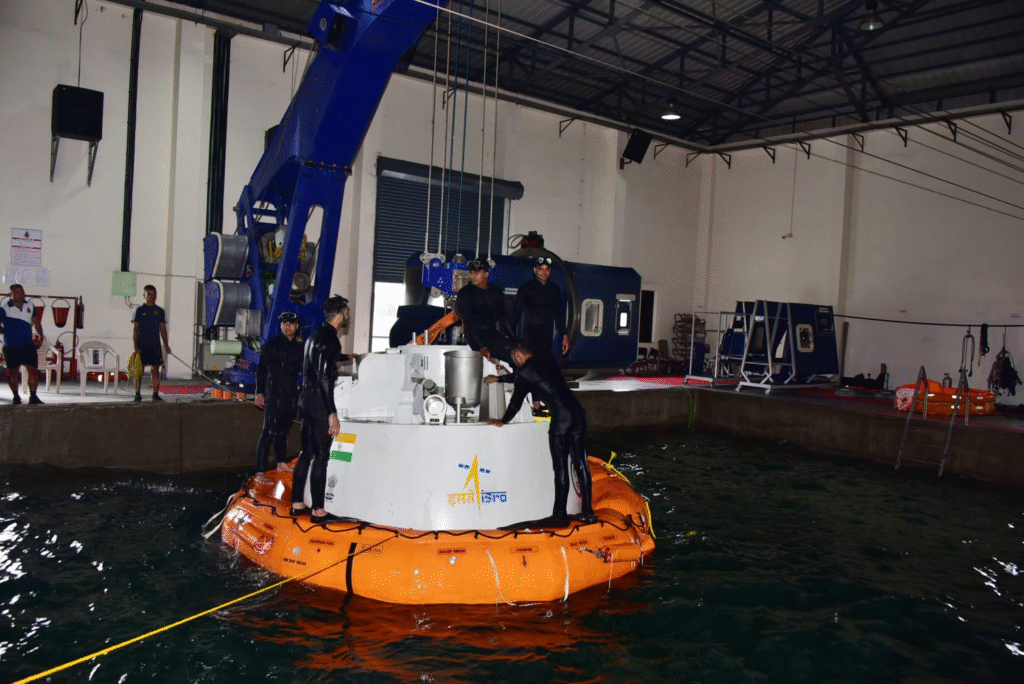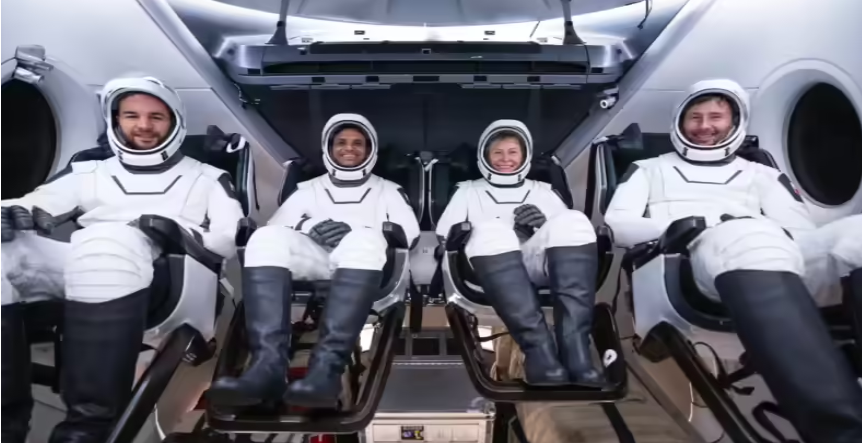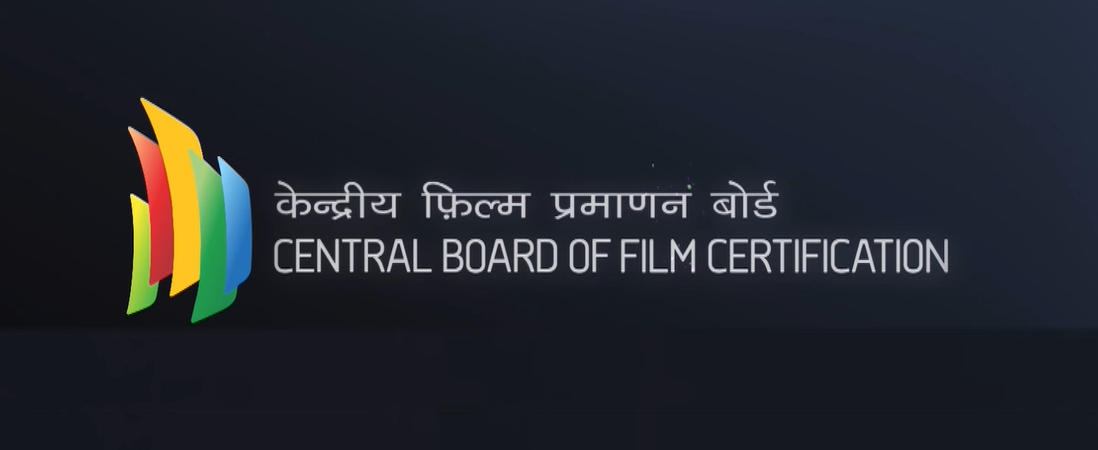History was made today as the Axiom Mission 4 (Ax-4) successfully launched, carrying a multinational crew including Group Captain Shubhanshu Shukla, who became the first Indian astronaut to travel to the International Space Station (ISS).
After multiple delays, the Axiom-4 (Ax-4) mission soared towards the ISS at 2.31am Eastern Time (12.01pm IST) Wednesday. The mission lifted off aboard a SpaceX Falcon-9 rocket from Launch Complex 39A at Nasa’s Kennedy Space Center in Florida. The crew will now travel to the orbiting laboratory on a new SpaceX Dragon spacecraft. The targeted docking time is approximately 7am Eastern Time (around 4.30pm IST) on Thursday, June 26.
The Axiom Mission 4, a collaborative effort between Axiom Space, SpaceX, and NASA, saw its successful lift-off today, marking a new era for commercial space endeavors. The crew of four includes commander Peggy Whitson, an Axiom employee and former NASA astronaut, and pilot Shubhanshu Shukla of the Indian Air Force (IAF). Shukla’s participation is particularly noteworthy, as he is the first Indian national to visit the ISS and the second Indian to journey into space, following Wing Commander Rakesh Sharma’s historic flight in 1984. His role as pilot underscores India’s growing prominence in global space endeavors. The mission’s successful launch has been met with widespread celebration across India, highlighting the nation’s pride in its space achievements.
The Axiom Mission 4 is more than just a private spaceflight; it is a dedicated scientific endeavor with a multitude of objectives aimed at advancing human knowledge and fostering commercial opportunities in low Earth orbit. The private astronauts are scheduled to spend approximately two weeks aboard the ISS, during which they will conduct over 60 scientific experiments and demonstrations. These experiments span various fields, including human research, Earth observation, and technology demonstrations in the microgravity environment of the ISS [1].
One of the key objectives of Ax-4 is to demonstrate that astronauts with insulin-dependent diabetes can be supported for short-duration stays in microgravity. This particular experiment highlights the mission’s commitment to inclusive space exploration and understanding the physiological effects of space on a diverse range of individuals. Beyond scientific research, the mission also focuses on educational outreach and commercial projects, further solidifying the role of private entities in the burgeoning space economy. NASA’s involvement in these private missions underscores its goal of achieving a robust economy in low Earth orbit, where the agency can procure services as one of many customers to meet its scientific and exploration needs [2]. The mission also marks another step for Axiom Space in its plans to build the world’s first commercial space station, Axiom Station.
India’s Legacy in Space: A Historical Perspective
India has a rich history in space exploration, marked by significant achievements and a growing presence in the global space community. The nation’s journey into human spaceflight began decades ago, with Wing Commander Rakesh Sharma becoming the first Indian citizen to venture into space. On April 3, 1984, Sharma, a pilot with the Indian Air Force, flew aboard the Soviet Soyuz T-11 spacecraft as part of a joint Indo-Soviet space program. During his eight-day mission, he conducted various scientific experiments and observations, making history as the first Indian to orbit Earth [3]. His iconic response of “Saare Jahan Se Achcha” (Better than all the world) when asked by then-Prime Minister Indira Gandhi how India looked from space, remains a cherished moment in Indian history.
For over four decades, Rakesh Sharma remained the sole Indian to have traveled to space. While astronauts of Indian origin, such as Kalpana Chawla and Sunita Williams, have made significant contributions to space exploration as NASA astronauts, Shubhanshu Shukla’s flight on Axiom 4 marks the return of an Indian national to space after a 41-year hiatus. This long gap underscores the significance of Shukla’s mission, as it not only continues India’s legacy in human spaceflight but also opens new avenues for private participation and international collaboration in the country’s space endeavors. India’s commitment to space exploration is further exemplified by its ambitious Gaganyaan program, which aims to send Indian astronauts into space on an indigenous mission.

Gaganyaaan Mission
India is making significant strides in its ambitious human spaceflight program, known as Gaganyaan. This initiative by the Indian Space Research Organisation (ISRO) aims to demonstrate the nation’s capability to send a crew of three members to an orbit of 400 km for a three-day mission and safely return them to Earth. The Gaganyaan project is a cornerstone of India’s long-term space strategy, which also includes plans for building and operating a national space station.
The Gaganyaan mission is planned to involve a series of test flights, including two uncrewed missions, before the first crewed flight. While initial timelines have seen some adjustments, India now aims to launch its first astronauts into Earth orbit no sooner than 2027. This program will solidify India’s position among an elite group of nations with independent human spaceflight capabilities, showcasing its technological prowess and commitment to exploring the final frontier. The mission is expected to foster scientific research, technological development, and inspire a new generation of scientists and engineers in India.



